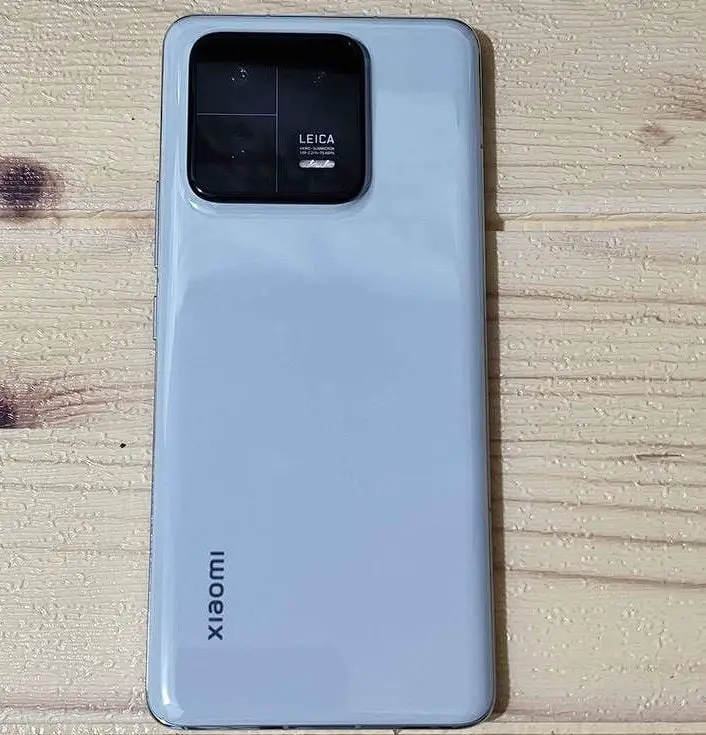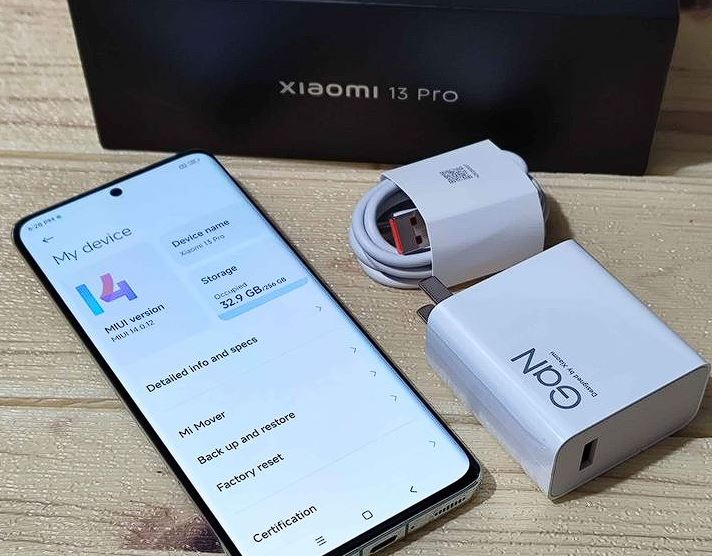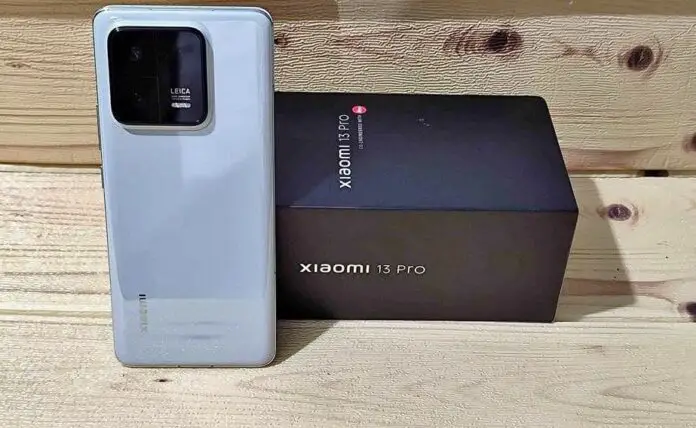While Xiaomi is in a strong position in the entry-level and mid-range smartphone market, the Chinese brand is still a little struggling in the high-end market. However, the company is far from offering bad smartphones. It only lacks a few minor improvements each time to offer truly competitive phones. Generally, the Pro model from the beginning of the year does not completely convince and the T Pro model, launched later, is responsible for correcting the shortcomings.
Table of Contents
Xiaomi 13 Pro: Pros and Cons
Pros
- Very elegant design (but very messy).
- One of the best OLED screens on the market.
- Excellent performance of the Snapdragon 8 Gen 2.
- Daytime photo component
- Ultra-fast charging.
- IP68 certified!
Cons
- Slightly disappointing battery life.
Design
If you liked the design of the previous generation of Xiaomi, you should note that this 13 Pro adopts a different style. The device is certainly not lacking in elegance, but to reinforce the premium positioning of its smartphone, the brand has chosen a mirror coating that inevitably retains fingerprints.

Which is not very pleasant when getting started since the phone constantly seems “dirty”, unless you cover it with a shell. Fingerprints are also likely to frequently appear on the large Leica photo module. Square in shape, it occupies a good part of the upper part of the back.
We understand the desire to offer beautiful modules to users, but the space occupied is much higher than what we are used to seeing on smartphones. For comparison, the island of the 13 Pro is about one and a half times wider than that of the already bulky iPhone 14 Pro Max.
Overall, therefore, as much thanks to its dimensions of 162.9 x 74.6 x 8.38 mm for 229 grams as to its voluminous photo block, the Xiaomi 13 Pro is impressive.

At the front, it opts for a large 6.7-inch curved slab. The edges have remained sufficiently thin, which allows a display surface of almost 90% of the facade. A punch comes to take place in the center to accommodate the sensor dedicated to selfies.
The rest of the smartphone ultimately remains quite classic. The power and volume buttons are located on the right edge, while the left one remains blank. The lower edge accommodates the dual-SIM slot, a speaker and a USB-C port.
Xiaomi offers its new flagship the IP68 standard, guaranteeing it waterproofness and resistance to dust. A very good point that we can consider essential at this price level, and which was missing on the 12 Pro. The Xiaomi 13 Pro is also ready for the future with compatibility with Bluetooth 5.3 and Wi-Fi 7.
Performance & Hardware
Like any good flagship of 2023, the Xiaomi 13 Pro is equipped with a Snapdragon 8 Gen 2 chip, the latest and most powerful from Qualcomm, coupled with 12 GB of RAM on our test model (but a variant with 8 GB is also available). The two characteristics put together guarantee – normally – to benefit from high performance.
And on this point, the new 13 Pro does not disappoint in the least. If the Samsung Galaxy S23 Ultra had been able to impress us, it is the same with the Chinese flagship. On RAM management, there is nothing to complain about.
The smartphone is one of the fastest to date, behind another Xiaomi model, the Mix Fold 2. Nothing will therefore worry this 13 Pro, which is good news. Let’s add that this power/MIUI 14 couple makes the experience very fluid.
In game, we make the same observation. The Xiaomi 13 Pro is a real machine, getting the same rating as Samsung’s latest flagships. Something that we did not necessarily expect to see happen given the contained performance of the OnePlus 11 which runs with the same chip.
With an average of 125 frames per second, the smartphone is capable of running all the games you submit to it. At maximum, the 13 Pro climbed to 130 fps, and at its lowest, dropped to 80 fps (for a single small second). Watch out for the heating all the same, since the feeling of heat is much more felt than with the flagship of Samsung. It seems that the cooling is not as mastered on the side of the Chinese manufacturer.
Display
For its new flagship, Xiaomi is bringing out the heavy artillery. 6.7-inch LTPO Oled screen, WQHD + definition (3200 x 1440 pixels), adaptive refresh between 1 and 120 Hz or even HDR10 + and Dolby Vision compatibility, everything is there. This slab promises mountains and wonders and does not disappoint.
It starts with a basic brightness that reaches peaks, with a peak recorded at 1441 cd / m², the highest value we have been able to measure to date. On this point, even Samsung’s Galaxy S23 are outclassed.
In HDR content, the brightness goes even higher with 1700 cd / m², where Xiaomi announces 1900 cd / m². It’s a little below, but it’s not disturbing. At its lowest, the LTPO panel can drop to 2.2 cd/m². It should also be noted that the reflectance is below 40%, which does not happen so often on conventional screens (read “non-folding”).
The colorimetry is also very good, Xiaomi having made great progress on this point for a few generations of high-end. By default, the latter is obviously not perfect and it will be necessary to turn to the usual settings to take advantage of the best of its panel.
By choosing the “Original Colors” screen mode, the color temperature is 6575 kelvins, with a Delta E of 1.3. Measurements that deserve compliments, and much more pleasing to the eye than the 7789 K (and Delta E of 2.5) that we obtained with the default settings, and which resulted in a display that was too cold.
Thanks to OLED technology, the afterglow time is zero and the contrast ratio is close to infinity. Touch delay was measured at 48ms.
Battery
This heating problem mentioned in the “Performance” section of this test unfortunately affects the overall autonomy of the device. Thus, according to our test protocol using SmartViser, Xiaomi’s latest product only lasts for 14 h 04 min. A duration well below the average recorded on high-end smartphones.
This is certainly superior to the result of the Xiaomi 12 Pro last year, which sinned in the field of autonomy, but a notch below the Xiaomi 12T Pro, which had been able to correct this major defect. In fact, the smartphone is capable of tarnishing a day of use, but under heavy load, it will lose battery points quite quickly.
On the charging side, Xiaomi now frequently offers a power of 120 W. This time, the block delivered adopts GaN technology and promises, as on the 12T Pro, a passage from 0 to 100% in the space of 19 minutes for its 4820 mAh battery. Except that in reality, the smartphone takes 34 minutes to fully regain its autonomy.
But this is a software restriction: by default, ultra-fast charging is not activated, and you will have to go through the battery settings to benefit from the full power of its charging block, which translates then by a full in 25 minutes. The smartphone also accepts fast wireless charging (at 50 W) and offers reverse charging at 10 W.
Camera
The Xiaomi 13 Pro is officially the first smartphone from the company to offer the general public the fruit of its partnership with Leica – the 12S Ultra model that we tested last summer having only been marketed in China. At the hardware level, the flagship uses the 1-inch type sensor of the 12S Ultra version, with a definition of 50 megapixels. The ultra wide-angle as well as the 3.2x telephoto lens also have a definition of 50 megapixels.

For the software part developed with Leica, you will have to take care of one thing: the mode. Indeed, when you first start the photo application, you will have to choose between two renderings (Leica Authentic or Leica Vibrant).
Do not think that the choice of one or the other has no impact; there is indeed a real difference in the shots that are captured. We will detail this in a dedicated article, but be aware that for the purposes of this test, we preferred the Leica Vibrant mode, the one that best exploits the camera’s photo capabilities.
Before getting to the heart of the matter, let’s note several points: the effectiveness of AF tracking, which seemed to us to be particularly efficient in real conditions, but also a mode that we do not note in its own right, namely the macro. Xiaomi uses its 75 mm module to do this, which makes it possible to take interesting shots, more than with the ultra wide-angle generally used by the competition.
Main module: 50 megapixels, f/1.9, eq. 23mm
The two smartphones are quite equivalent in terms of sharpness. Only here, the Xiaomi 13 Pro offers much more controlled colorimetry than the Samsung. The S23+ suffers from too marked overexposure, one of the weaknesses of the Korean company which has not managed to correct it on its flagship. The Xiaomi model offers a very homogeneous rendering in the center as well as on the periphery of the image and, it must be admitted, frankly pleasing to the eye.
At night the trend is somewhat reversed, since the shot suffers from one of Xiaomi’s inherent shortcomings. Indeed, the colorimetry tends to pull towards red, even if its light shades seem fairly accurate. The processing is quite gentle, when the S23+ relies on an accentuation of microcontrasts, and the final result, although imperfect on certain elements of our scene (moiré, in particular), remains pleasant.
50 megapixel mode
The 50-megapixel mode, accessible in the “More” tab of the 13 Pro’s photo application, is of excellent quality. It makes it possible to carry out important reframings in the image without loss of quality, provided that the light is there. On the other hand, in low light, it does not offer any particular interest.
Ultra-wide-angle module: 50 megapixels, f/2.2, eq. 14mm
The ultra wide-angle struggles more than the wide-angle, and the advantage goes to the Samsung Galaxy S23+. Indeed, with the pixel-binning, we note a lack of sharpness detrimental to the Xiaomi 13 Pro. However, the shot is correctly exposed and the colorimetry is good. But facing him, the choice of an accentuation of contrasts works in favor of the Korean model.
In low light, Samsung’s software know-how speaks. The image captured by the 13 Pro is of course not catastrophic, but lacks sharpness and suffers from the comparison with that of the Galaxy S23+. The image is more detailed, even if it suffers from the appearance of digital noise – which remains adequately controlled by Samsung.
Front module, portrait and video mode
At the front, the 32-megapixel module allows you to capture good selfies, even if you have to be careful with the trigger, since the beauty tricks are activated. Otherwise, the sharpness is good, but the general tone of the photo sometimes reddens the skin a little too much. It will then be necessary to pay attention to the exposure of the photograph under penalty of ending up with an unflattering result.
The portrait mode, on the other hand, is quite interesting. With the front module, it is quite classic. It works well, despite clipping that isn’t always perfect, struggling to clip messy hair. It is especially with the rear modules that it reveals its full potential. Indeed, various modes are present, to multiply the different portraits.
A black and white mode with a 35 mm equivalent, a “Swirly bokeh” mode equivalent to 50 mm, a “true” portrait mode — 75 mm equivalent — taking advantage of the telephoto lens, and finally, a “Soft focus” mode — 90 mm equivalent .
All are very interesting to use (apart from the “Artistic blur” mode, which did not really appreciate our test conditions) and it must be recognized that the 13 Pro is doing very well on this point and sometimes manages to stick with what a Google Pixel 7 Pro can offer, for example.
Software
The Xiaomi 13 Pro is the company’s first smartphone to ship under MIUI 14, the in-house software interface. Android 13 is also in the game. If you want to learn more about this interface, refer to the paper we have dedicated to it:
Build Quality
Our sustainability score helps determine the sustainable aspect of the smartphone for both the consumer and the environment. It is based on the repairability index, durability criteria (protection index, standard connectors, warranty period and updates, etc.) and an assessment of CSR (Corporate Social Responsibility) policies.
Conclusion
If it is not 100% perfect, the Xiaomi 13 Pro comes very close. In any case, it adopts everything you need for a very high-end smartphone: a first-class screen, photo versatility, high-flying performance or even an IP68 standard. In the end, it only needs a more generous autonomy to rise to the rank of ultra premium smartphone to which it claims.
Best Price on Amazon now: $1199.99
Xiaomi 13 Pro Specs
| Xiaomi 13 Pro | Specs |
|---|---|
| Dimensions | 162.9 x 74.6 x 8.38mm |
| Weight | 229g |
| Screen diagonal | 6.73 inches |
| Screen Definition | 3200 x 1440px |
| Resolution | 522 dpi |
| Screen type | Amoled |
| Part of the surface screen | 90.36% |
| mobile chip | Snapdragon 8 Gen 2 |
| Processor | Cortex-X3, Cortex-A715, Cortex-A710, Cortex-A510 – 3.2 GHz |
| Number of cores | 8 |
| Integrated GPU (iGPU) | Adreno 740 |
| Memory (RAM) | 12 GB |
| Internal memory | 512 GB |
| Memory card | No |
| Battery capacity | 4820mAh |
| Video capture | 8K |
| Operating system (OS) | android |
| OS version tested | 13 |
| connectors | USB-C |
| Fingerprint sensor | Yes |
| Wi-Fi type | WiFi 6 802.11ax |
| Bluetooth type | 5.3 |
| NFC | Yes |
| 4G (LTE) | Yes |
| 5G | Yes |
| eSim | Yes |
| Dual sim | Yes |
| SIM card size | Nano |
| Type of sealing | IP68 |
| Gyroscope | Yes |
| Removable battery | No |
| 4G frequency bands | B1 (2100), B20 (800), B28 (700), B3 (1800), B7 (2600) |
| Inductive charging | Yes |
| Shockproof | No |
| Jack plug | No |
| Rear Photo Module 1 | 50MP, wide-angle, f/1.9 |
| Rear Photo Module 2 | 50MP, ultra-wide-angle, f/2.2 |
| Rear Photo Module 3 | 50MP, telephoto, f/2 |
| Front Photo Module 1 | 32MP, wide-angle, f/2 |

